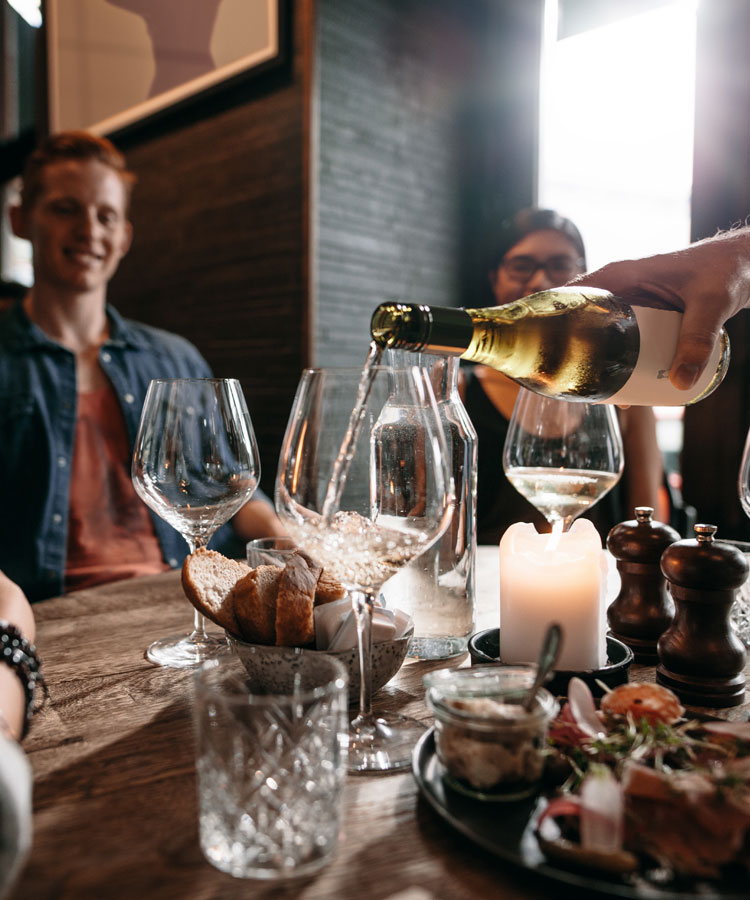
There’s no doubt that Germany has become synonymous with the greatest Riesling in the world, especially from the vineyards along the banks of the country’s notoriously winding and steep Mosel River Valley. But the country is no one-hit wonder, and the grapes that have been in Riesling’s giant shadow — including those from the country’s other 12 winemaking regions — are finally starting to get their due.
Now is the time to get well-acquainted with Germany’s other wine regions, and to bring other German grapes, like Dornfelder, Trollinger, Silvaner, and Scheurebe to your table. Here are eight reasons why German wine should be on your to-do list this fall:
1. The Country Has an Impressive Winemaking History
Germany has been producing wine for almost two millennia. For instance, the recorded viticultural history of the Sachsen region, one of the more recent regions to receive official status as an area of wine production, goes all the way back to 1161, when the church and aristocracy were the primary property owners. Saale-Unstrut, Europe’s northernmost wine-growing region, has been producing wine since 998 A.D. Earlier, Emperor Charlemagne helped spread viticulture throughout Germany and other parts of what was then the Holy Roman Empire. Around 800, he brought winemaking to the Rheingau after he noticed from his Ingelheim palace that the snow melted more quickly on the opposite side of the Rhine river and deduced that it would be appropriate for viticulture. And even further back, the Romans began cultivating vines in the Mosel in the second century B.C. There’s a cellar in the Mosel that, incredibly, dates back to 330 A.D.
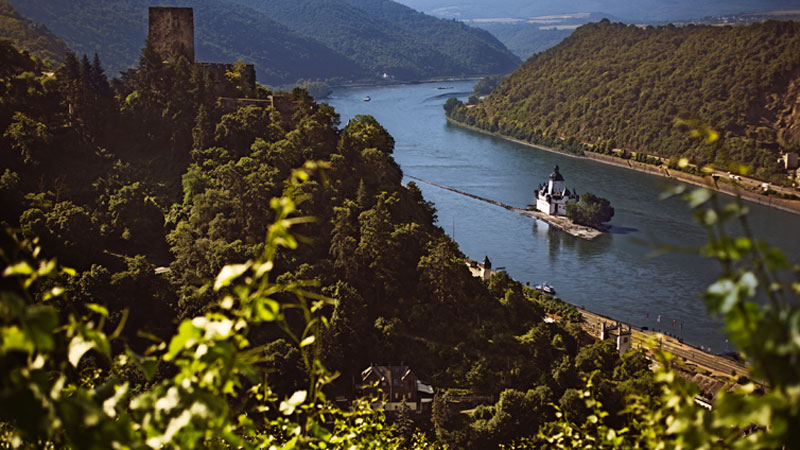
2. Riesling Gives You Options
We know at this point that not all Riesling is sweet. In Germany, a whopping 69.2 percent of total wine production in 2018 was dry and semi-dry wines.
But Riesling comes in just about any form you want in Germany — from frothy, zingy sekt to vibrant, concentrated, trockenbeerenauslese, an intensely sweet wine. Thinking of German Riesling as just one monolithic entity will prevent you from seeing the whole picture. Traditionally, German wine labels give you everything you need to know about the wine — the grape, region, and vineyard.
If you want a very dry Riesling, look for the word “trocken” as it signifies a dry wine, with never more than 9 grams of residual sugar per liter. “Halbtrocken,” considered semi-dry, will have fewer than 18 grams of residual sugar per liter (for comparison, milk has around 50 grams of sugar per liter). You may also notice the words kabinett, spätlese, auslese, beerenauslese, trockenbeerenauslese, or eiswein. These words refer to the ripeness of the grapes when picked — kabinett being the least ripe, spätlese being the next highest (“spät” means late, referring to the fact that the grapes stayed on the vine longer and had the opportunity to develop more sugar), and so on.
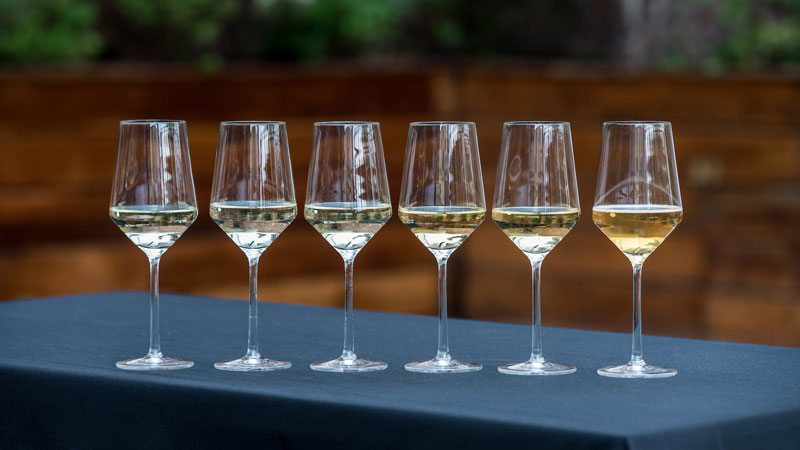
When it comes to wines labeled kabinett, spätlese, and auslese, know that while they might have a little residual sugar, they ought to be so supremely balanced with acidity that odds are, you might not even notice. Pair with spicy curry, chicken salad, or even sushi.
Structure is what takes a wine from saccharine to stunning. Much like lemonade, sweetness without acidity is straight-up cloying— and so it goes with wine. The best winemakers in Germany have perfected this balance in Riesling. Thanks to the cooler climate, grapes don’t ripen as fully as in warmer regions, retaining brisk acidity, and the perfect balance to any sweetness. With even just a smidge of residual sugar comes incredible pairability. Instead of Mimosas, grab a semi-dry bottle of Riesling for brunch and wow your friends with how perfectly it goes with everything from bacon to French toast. Try a semi-sweet Riesling with fried chicken and prepare to have your mind blown.
3. Riesling Isn’t Germany’s Only White Grape
While Riesling is by far the single most widely planted grape variety, Germany’s other white grapes, such as Müller-Thurgau, Silvaner, Grauburgunder, Weissburgunder, and Scheurebe, account for more than 43 percent of the country’s vineyard area.
Surprising, but true, Müller-Thurgau, a little-appreciated cool climate white grape, accounts for 12 percent of the vineyard plantings in Germany, making it the second most widely grown grape. This lightly floral, super-fresh wine is ideal for everyday drinking and pairs beautifully with pulled pork or pho.
The names Pinot Gris and Pinot Blanc might be familiar, but they are especially important in Germany, which is the world’s top producer of Pinot Blanc (called Weissburgunder locally) and the third-largest producer of Pinot Gris (called Grauburgunder). Both grapes are mutations of Pinot Noir and can be found throughout Germany, especially in the Rheinhessen, the Pfalz, and Baden.
Another, Silvaner, (which can sometimes be found in a unique, ovoid-shaped bottle called a bocksbeutel) has a long history in Germany, producing juicy, full-bodied white wines. Friendly, crisp Silvaner is just about perfect with a hearty salad or a tofu stir-fry.
And Scheurebe (SHOY-ray-buh), primarily grown in the Rheinhessen, is a hybrid of Riesling and an unknown wild grape that was crossed by Dr. Georg Scheu in 1916. With idiosyncratic notes of black currant and grapefruit, this aromatic grape is a cult favorite among German winemakers.
4. Germany’s Vibrant, High-Acid Red Wines Are Extremely Versatile
Love Pinot Noir? Dive into German reds. More than one-third of German vineyards are planted with red varieties, and Germany is the third-largest producer of Pinot Noir in the world, after France and the U.S. Spätburgunder, a.k.a Pinot Noir, is known for its distinctive spice and refreshing acidity, making it immensely pairable. It accounts for more than 60 percent of the grape plantings in the rocky hillsides of the Ahr region, known as Germany’s “red wine paradise.” As with all your favorite Pinots from anywhere in the world, it’s gorgeous with roast chicken or grilled salmon.
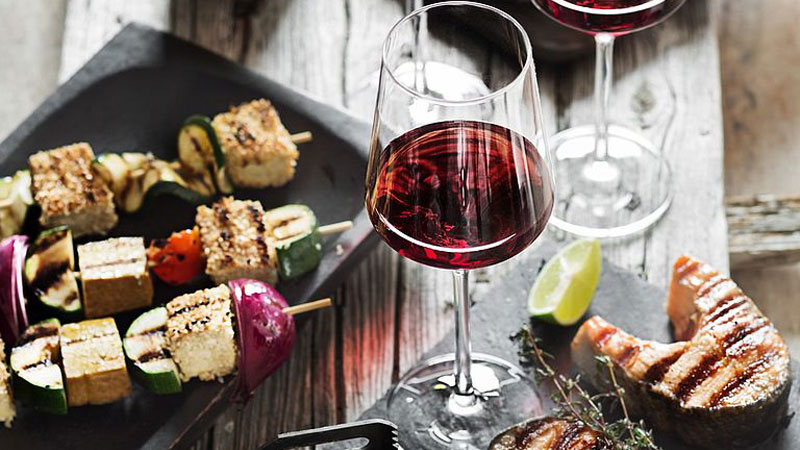
If you like your light red wines with a bit of a chill, head straight for Trollinger (called Schiava in northern Italy) with its slightly smoky strawberry flavors, perfect with cheese and charcuterie or just about any BYOB situation you can imagine. Next time you steam some dumplings or order some mofongo, pull out a bottle of chilled Trollinger for a refreshing treat.
Velvety, tannic Dornfelder from the Pfalz or the Rheinhessen is perfect if you’re looking for a red with a bit more heft to pair with richer meat dishes – think barbecue. Its floral character and aromas of fresh berries also makes it excellent with sausage or meaty pizza. Portugieser, which surprisingly comes from the Danube and not from Portugal, is typically grown in the Pfalz, the Rheinhessen, and the Ahr and makes medium-bodied, refreshing reds and rosés.
5. Sparkling Wines Are on the Rise
The German word for sparkling is “sekt” and just about all your favorite German wine grapes are made into sparkling wine, with around 50 percent of premium German sparkling wine made from Riesling and 30 percent from the Pinot varieties, according to GuildSomm. There are over 1,000 producers of sekt in Germany, and Germans drink more sparkling wine per capita than any other country, which makes it slightly hard to find elsewhere. And if you find a bottle labeled “winzersekt,” you’re especially lucky— this is the classification for single-varietal, estate-grown, vintage sparkling wines of especially high quality.
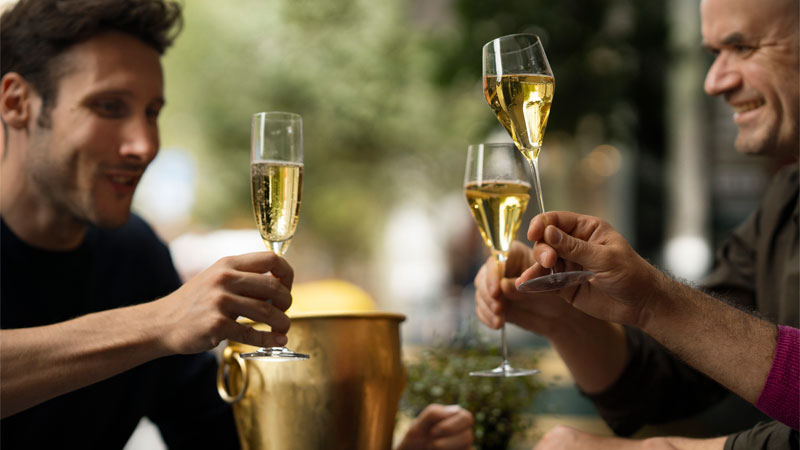
6. Germany Has 13 Regions, 12 of Which You’ve Probably Never Heard Of
Odds are if you are familiar with any region in Germany, you know the Mosel, and with good reason: The unbelievable slate soils and steep riverside slopes make for unparalleled wines, especially Riesling. But there are 12 other regions beyond Mosel (most of which are also named after the rivers that run through them — and produce equally thrilling wines) that deserve your attention. Microclimates vary considerably between the regions, with southernmost Baden being the only German region that belongs to E.U. climate zone B, a designation reserved for warmer regions. Just north of Baden and along the French border, the Pfalz enjoys an almost Mediterranean climate, while the mild climate in the Ahr, to its northwest, allows for a number of red varieties to grow successfully.
The fact that high-quality wine can be made so far north is possible primarily due to the Gulf Stream, bringing warm air through the many river valleys. Vines are strategically planted on south-facing slopes in valleys protected by harsh weather, and the immense soil diversity in Germany also plays a part, with hundreds of suitable soil types that retain heat and can suit the needs of many different varieties.
7. Every Year, Germany Elects a ‘German Wine Queen’
Every autumn, the German Wine Institute chooses a “German Wine Queen” from one of the 13 regions from a pool of candidates, each of whom has shown a strong commitment to German wine. The 70-member jury that elects each year’s Wine Queen is comprised of industry professionals, the press, and political leaders. Since 1949, the German Wine Queen has been responsible for communicating the world of German wine to the public and is on the road some 250 days a year. The current wine queen is Angelina Vogt, from the Nahe region, who is supported by the German Wine Princesses Julia Sophie Böcklen from Württemberg and Carolin Hillenbrand from Hessische Bergstrasse.
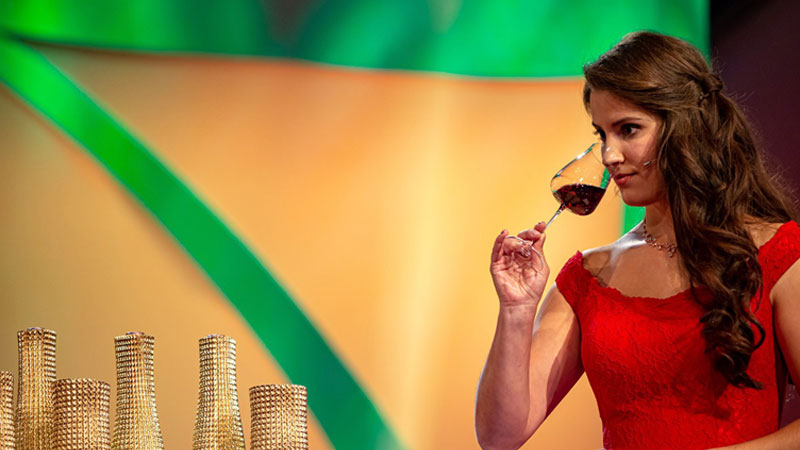
8. German Wine Is Ever Evolving
Best of all, German wine is focused on innovation — using the lessons of the past to engineer a brighter future. New press technology is spreading, which mimics the effect of ancient basket presses. And many forward-thinking producers are choosing to convert their vineyards to organic and biodynamic viticultural practices.
In the cellar, many German producers work with top Burgundian coopers to source the best barrels for their unique expressions of Pinot Noir. Young winemakers are banding together, allowing members of groups such as “Generation Riesling” better access to winemaking and marketing resources. The lessons of history and modern innovation come together here.
The country’s wine culture is booming, supported by the high-quality wine it produces. And, in particular, Berlin’s wine scene is flourishing — some of the hottest spots for German wine include a Chinese restaurant called “Hot Spot,” an indoor market with a wide array of international food options, and a Michelin-starred restaurant so hyper-local that pepper, lemon, and chocolate are all banned from the menu. The city’s also full of hip new wine bars, including one, Weinerei, where guests “rent” a glass for a few Euros, filling and refilling wine as they please, paying what they feel their drinking was worth at the end of the evening.
When you drink German wine, you are experiencing a beautiful marriage of past, present, and future.
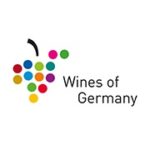
This article is sponsored by Wines of Germany.
